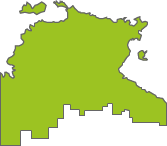Announcements
5 May 2025
Hello NatureMaprsAs we move into the cooler months and sighting counts begin to wind down our team has been working tirelessly to ensure our platform’s usability and performance. All merch has been po...
Continue reading
Improvements to data import tool (coming soon)
NatureMapr welcomes Edgar McNamara
Platform wide attribute changes
New Feature: Moderator Quick Responses!
Discussion
KimberiRP
wrote:
2 hrs ago
I agree it's not Neotartessus flavipes.
Protartessus nynganensis is a possibility - see https://idtools.dpi.nsw.gov.au/keys/leafhop/species/pnynganensis.htm - but I haven't found any images of the live insect.
Protartessus nynganensis is a possibility - see https://idtools.dpi.nsw.gov.au/keys/leafhop/species/pnynganensis.htm - but I haven't found any images of the live insect.
Neotartessus flavipes
WendyEM
wrote:
Yesterday
"STICHTOCHILA gen. n. ..... Antennae a little more than two-thirds the length of fore wings (0.70-0.72x), ciliations near base in male 2.5-4.3x diameter of flagellum, diminishing in length to about three-fourths, flagellum in female ventrally unscaled, scape with strong pecten." Mon. of Aust. Lep. Vol. 3 Common, I.F.B. CSIRO 1994 p. 135
Stictochila (genus)
dcnicholls
wrote:
Yesterday
I’m inclined to think this may be a B. Minus. May need to wait until it gets a bit bigger.
Blechnum wattsii
ibaird
wrote:
Yesterday
Yes, agree it superfciaslly looked like a Ctamdid species but the palps are clearly Oeciporidae family. I see your point,
but I'm not sure I could call 4668791 P. agnesella though,
but I'm not sure I could call 4668791 P. agnesella though,
Philobota agnesella
ibaird
wrote:
Yesterday
Moth damaged, missing half of one forewing. Possibly P. orescoa but black collar at the thorax not clearly prominent as one mighr expect.
Philobota group
Significant sightings
- Araujia sericifera at Kaleen, ACT
- Araujia sericifera at Kambah, ACT
- Aporocera rufescens at Rendezvous Creek, ACT
- Polygonum plebeium at Goulburn, NSW
- Berberis vulgaris at Campbell, ACT
- Asparagus asparagoides at Ainslie, ACT
- Arundo donax at Campbell, ACT
- Proteuxoa sp. 3 (MoV, Part 9) at Harrison, ACT
- Androchela newmannaria at Crowther, NSW
- Ventopelita leucocheilus
Recent activity
Top contributors
- AlisonMilton 16.1K
- trevorpreston 15.5K
- Hejor1 12.6K
- Tapirlord 11.5K
- MichaelBedingfield 10.7K
- RodDeb 10.3K
- Mike 9.9K
- kasiaaus 9.7K
- ConBoekel 8.8K
- KylieWaldon 8.2K
Top moderators
- MichaelMulvaney 56.4K
- Tapirlord 39.3K
- MichaelBedingfield 22.2K
- Liam.m 19.5K
- donhe 17.5K
- natureguy 15.6K
- ibaird 14.8K
- AlisonMilton 10.7K
- MatthewFrawley 10.3K
- BettyDonWood 8.2K
Explore Australia by region
Australian Capital Territory
Canberra & Southern TablelandsNew South Wales
Southern HighlandsAlbury, Wodonga
Canberra & Southern Tablelands
South Coast
Greater Sydney
Hunter Region
Central West NSW
Riverina Murray
New England
Far West New South Wales
New South Wales North Coast
Northern Territory
Top End and Big RiversCentral and Barkley
































































































![Unverified Cap on a stem; gills below cap [mushrooms or mushroom-like] at Wellington Park, TAS - Yesterday by VanessaC Unverified Cap on a stem; gills below cap [mushrooms or mushroom-like] at Wellington Park, TAS - Yesterday by VanessaC](https://api.naturemapr.org/api/sightings/4669128/images/1?width=300&height=300)





![Unverified Cap on a stem; gills below cap [mushrooms or mushroom-like] at Wellington Park, TAS - Yesterday by VanessaC Unverified Cap on a stem; gills below cap [mushrooms or mushroom-like] at Wellington Park, TAS - Yesterday by VanessaC](https://api.naturemapr.org/api/sightings/4669122/images/1?width=300&height=300)
























































































